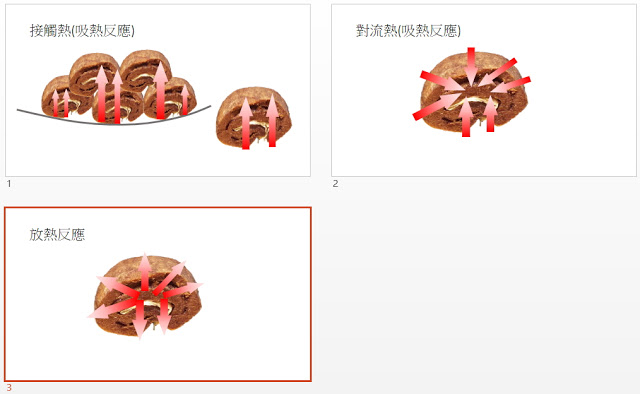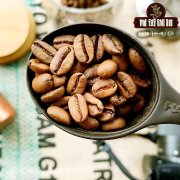Professional coffee roasting | [bean roaster] relationship between heat conduction and roasting
Professional coffee knowledge exchange more coffee bean information please follow the coffee workshop (Wechat official account cafe_style)
Coffee roasting _ coffee bean roasting _ coffee roasting training
. As long as it is a roller roaster, whether it is straight fire, semi-direct fire, semi-hot air or hot air, because the coffee beans are vacated and flew in the baking bucket through the rotation of the rolling bucket and the stirring of the leaves in the bucket, the coffee beans will definitely come into contact with the bucket and fly in mid-air, so the heat source accepted by beans must be conduction, convection and radiation, but there is only a difference in proportion. To simplify the discussion, let's ignore radiant heat and focus on conduction and convection heat.
As long as it is a drum roaster, the way of heat transfer of beans must be compound, not only a single type, but just a difference in proportion. But in order to simplify thinking, we temporarily lock the hot air baking on the heat transfer of hot air, and the non-hot air on the contact heat or conduction heat of the baking bucket to the beans. The schematic diagram is as follows:

Figure 1. And 2. It is a sign that the external heat is transferred to the bean when the bean is exposed to contact heat and convective heat during the endothermic reaction stage. It is a sign of the transfer of internal heat energy to the outside of the bean during the exothermic reaction stage.
Figure 1. When the bean comes into contact with the baking bucket, the temperature of the baking bucket is higher than the surface temperature of the bean, and the heat energy will be transferred from the place where the temperature is high to the place where the temperature is low, so it will be from the surface of the baking bucket-> the contact surface between the outermost bean and the baking bucket-> the surface of the other side of the bean-> the contact surface of the upper bean-> the interior of the upper bean, and so on, so there is no doubt that it is outside in.
If the baking bucket stops rolling for some reason, the outermost bean surface will be exposed to high temperature for too long, and the thermal conductivity of the bean tissue itself can not quickly lead away a large amount of high temperature in a short time, and it will be scorched. Therefore, the machine that pays attention to conducting heat baking, like roasting coffee in a pan or pottery pot, must maintain the continuous rolling of beans (not necessarily falling). For example, the spiral blade of RF300 cooperates with the rolling barrel speed of 60 revolutions per minute, so that the beans will not be scalded by the surface of the rolling bucket. the faster the beans roll, the faster the wheels move, the easier it is to bake evenly, on the contrary, they will bake unevenly.
Figure 2 shows that when the beans are repeatedly soared in the baking bucket by the rotation of the baking bucket and the stirring blades, during this period of time, it will be covered by the hot air in the baking bucket. it will also be covered by hot air blown into (active hot air) or inhaled (direct, semi-hot or passive hot air). The heat caused by hot air and hot air will heat the bean surface, and then bring heat energy into the inside of the beans. Heat energy accumulates inside the bean and carries out chemical reactions until the temperature inside the bean is equal to or higher than the temperature on the outside of the bean, or until the temperature on the surface of the bean is higher than the temperature of hot air. Because of the coating effect of hot air, the baking method with high hot air ratio will increase the uniformity of bean baking, and because of the coating effect and convection effect, the baking efficiency of hot air is higher.
We know that the chemical reaction of coffee roasting before browning is an endothermic reaction, and beans must absorb enough heat from the outside to carry out the chemical reaction. After browning, there begins to be an exothermic chemical reaction gradually, that is to say, the chemical reaction will release heat, especially after an explosion, there will be a relatively concentrated exothermic reaction, and its effect is when the firepower remains unchanged. The RoR of bean temperature suddenly rises sharply, resulting in the so-called "Flick" phenomenon. Figure 3. It is a schematic diagram of the release of heat energy from the inside to the outside during the exothermic reaction of beans.
It is said that hot air roasting will soften the acidity and thicken the body of coffee, but there is also a high hot air ratio baking method will highlight the sour coffee, the lowest air volume roasting will make coffee sweeter. In the end, which statement is correct? Different foundations, different machines, different beans, different conditions, different sensory judgments, how can so many differences say that one statement is right?
Going back to the basic principle, if the good acids (malic acid, citric acid) are not left, and the bad acids (formic acid, acetic acid, caffeic acid) are produced too much and dehydrated too little, the coffee will be too sour and unpalatable. So we must pay attention to the temperature rise and development ratio of the baking rhythm and the development stage, no matter what type of roaster is used (manual, of course), regardless of whether the heat conduction type is heat air or heat conduction. Should be able to bake sweet and sour coffee with a good balance.
What is the most important heat source of beans in the baking tube?
"even if the roaster, commonly known as the direct fire machine, is designed to use convection heat as the main heat source for heating coffee beans (in fact, the design of the direct fire machine is more dependent on convection heat than the semi-heat fan), the answer is" convection heat ". The ability of heat transfer per unit area of beans, in addition to the temperature difference between the two, there is one more cause of velocity variation in convection heat, and" the greater the velocity of the fluid near the surface of the object. The greater the surface convective heat transfer coefficient is, to master the convective heat is to master one of the most important weapons in the process of baking beans.
Here are the views collected by the well-known forum home-barista.com
The heat conduction of the baking tube body has never been one of the desired heat sources for beans in the canister. According to published literature, the main heat source for baking beans comes from convection and radiation heat from the tube body. The heat conduction of the tube is not only not helpful to baking beans, but also burns beans.
Therefore, the main function of the baking cylinder is to serve as an automatic stirring device and a thermal radiation surface. When the area of each bean in contact with the tube is larger (the batch with less bean quantity) and the air volume is lower, the bean bears more radiation heat, on the contrary, when the contact area between the bean and the tube is small (the batch with large bean volume) and the air volume in the tube is larger, the bean bears less radiation heat.
After reading several different documents, the convective heat of the traditional drum roaster is estimated to be about 75%. This, of course, means that the beans are stirred properly, and there is a suitable hot air flow and a proper proportion of the size of the baking tube and the amount of beans baked.
The formula for calculating the maximum rotational speed of the baking cylinder per minute is (30 / Pi) * (g / r) ^ 1 / 2. Where g = gravity acceleration (about 9.81 m / s) and r = the radius of the drum (m). This is the speed at which the bean keeps in contact with the drum (gravity = centrifugal force, the bean will stick to the furnace wall and won't fall off) there is an article by Henry G. Schwartzberg, which mentions that the best speed is between 0.9 and 0.75 of the maximum speed.
The contact between the bean and the baking tube is not face-to-face but point-to-point, and any prolonged contact will lead to scorching rather than transferring heat to the beans.
When heated, the baking tube is a radiant surface that can transfer heat to the beans through radiation, and the rate of transfer depends on the temperature of the baking cylinder.
The conduction of convective heat is complex because the flow velocity of the air flow in the baking tube and the rolling speed of the beans affect the heat transfer rate. However, the higher the ratio of air to beans (air to bean ratio), the more convective heat. Therefore, under the condition of the same air volume and heat energy, the baking speed of less baking quantity is faster than that of full load baking quantity.
After reading the above argument, the first thing to examine is the radius and rotational speed of the baking drum of your own bean roaster, followed by the number of mixing blades in the cylinder. If you calculate according to the formula, your speed does not fall in the range of 0.9 to 0.75 of the limit speed, but is slower (and usually slower). As long as there are mixing blades in the cylinder, the beans will not be scorched by the barrel, because the formula does not take into account the cause of blade accelerated stirring. For example, the limit speed of a baking cylinder with a radius of 10 centimeters is 95 revolutions per minute, but the original factory designed it at 60 revolutions per minute, and there are three groups of blades in the cylinder. originally, the speed of the best use of thermal convection is between 85 and 75 revolutions per minute, because there are three groups of blades. As long as more than 23 revolutions per minute, you can make full use of thermal convection. Under the original factory's design of 60 revolutions per minute, if you still want to increase the proportion of direct fire conduction and radiation heat in order to bake a complex flavor or rich level, if the method is not to change the speed of the motor, but to move the firepower and throttle, if it just achieves the effect, it can only be said that it is a good craftsmanship, not an objective truth.
Going back to the straight-fire bean dryer, there must be holes in the cylinder body of the direct-fire bean dryer, some are many, some are less, some holes are big, some holes are small, but rarely the fire chop of the direct-fire bean dryer will design a little fire, so it will burn directly to the tube, or even the coffee beans in the tube. If there is, I can only admire the bean bakers who use that machine, which is not within the scope of this article.
+
In general, the flame of the direct-fire bean dryer will keep a certain distance from the cylinder body, so that the outer flame with the highest flame temperature (colorless, the temperature above 800 degrees) will not burn directly to the tube, resulting in uneven temperature distribution. Therefore, the outer flame of the fire source is directly heated to the air and then forms thermal convection, and the baking tube absorbs the radiant heat of the fire source instead. Even so, the thermal conductivity of the baking tube is much higher than that of the air (iron 60, stainless steel 16, air humidity 0.024 to 0.031), the temperature is usually higher than hot air, often more than 300 degrees, such high temperature plus high thermal conductivity If the bean lengthens the contact time with the tube body (not much, with a single blade of 20 revolutions per minute, the contact time can be as long as 3 seconds), there must be a scorching point, but fortunately most of the bean dryers rotate fast enough and have enough leaves so that the beans will not be burned by the tube body.
Since the fire is heated directly to produce thermal convection, it moves through the air door of the roaster to produce a negative pressure difference in the baking chamber, and the hot air is introduced into the baking chamber to make heat transfer to the roasted cylinder and the beans thrown in the air. At the same temperature, the higher the wind speed, the faster the transfer (convection coefficient). Therefore, people who can make good use of hot air really have one more powerful weapon than others.
Basic and advanced sharing of coffee roasting experience and knowledge
Important Notice :
前街咖啡 FrontStreet Coffee has moved to new addredd:
FrontStreet Coffee Address: 315,Donghua East Road,GuangZhou
Tel:020 38364473
- Prev

Latte is not coffee latte and latte is not coffee! How do you drink latte?
Professional coffee knowledge exchange more coffee bean information please follow the coffee workshop (Wechat official account cafe_style) latte coffee the meaning of latte coffee the difference between latte and mocha my friend mentioned to me that a few years ago, she came to Italy to travel. The party went to the bar for coffee and ordered five cups of latte (latte). As a result, five cups of milk came to the bar table. My friend was very surprised and confused.
- Next

Brazilian Coffee Queen Manor Coffee Powder how to drink how to brew moderately roasted coffee beans hand-brewing parameters
Professional coffee knowledge exchange more coffee bean information please follow the coffee workshop (Wechat official account cafe_style) coffee powder _ how to cook coffee powder _ how to brew coffee powder [country] Brazil: So Paulo Sao Paulo State near So Sebastio da Grama [manor name] Queen Manor (Fazenda Rainha) [owner] Regina Helena Mello
Related
- Beginners will see the "Coffee pull flower" guide!
- What is the difference between ice blog purified milk and ordinary milk coffee?
- Why is the Philippines the largest producer of crops in Liberia?
- For coffee extraction, should the fine powder be retained?
- How does extracted espresso fill pressed powder? How much strength does it take to press the powder?
- How to make jasmine cold extract coffee? Is the jasmine + latte good?
- Will this little toy really make the coffee taste better? How does Lily Drip affect coffee extraction?
- Will the action of slapping the filter cup also affect coffee extraction?
- What's the difference between powder-to-water ratio and powder-to-liquid ratio?
- What is the Ethiopian local species? What does it have to do with Heirloom native species?

